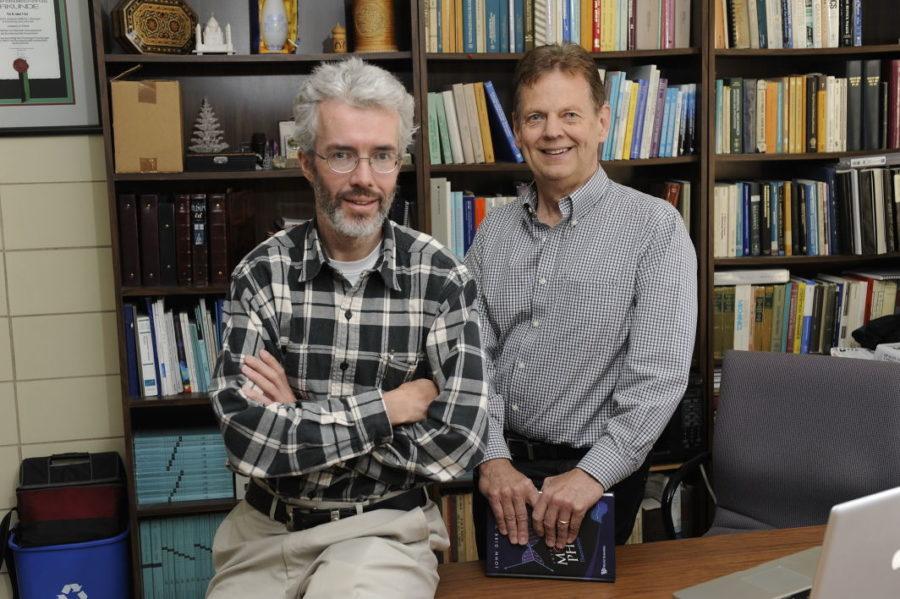ISU physicists help prepare next generation supercomputer
Iowa State University’s Pieter Maris, left, and James Vary will get a head start on scaling up their computer codes for the Energy Department’s next-generation supercomputer.
October 9, 2014
Iowa State nuclear physicists and other research teams competed for a head start in coding for the next generation supercomputer.
The 20 winning teams have access to working with the computing center staff and the new computer’s developers from Cray Inc. and Intel Corp. to solve problems and prepare for the $70 million machine.
The prime leaders of the group are physics and astronomy research associate professor, Pieter Maris and professor James Vary. They will use the supercomputer to study the processes that happen when stars explode and how the sun burns.
Learning more about the fusion reactions that release energy could help build earth bound fusion reactors that generate energy. A fission reaction splits an atom into two or more smaller atoms, while a fusion reaction is just the opposite. It fuses two or more atoms into a larger one.
The energy released from a fusion reaction is three to four times greater than that of a fission reaction.
“We’re trying to make discoveries that will have a societal impact,” said George Papadimitriou, a postdoctoral research assistant. “It’s exciting to collaborate with mathematicians and computer scientists, because we learn many things from them and they learn many things from us.”
The teams maintain constant communication through meetings, Skype, phone and email to stay updated on research.
“Nobody can know everything about this kind of technology, we’re trying to get science done so we use the tools but we don’t necessarily want to know everything about them, just enough to make our science run efficiently within the budget of those machines,” Vary said. “The supercomputer involves many sophisticated scientific calculations every second.”
In simple terms the supercomputer is similar to hundreds of thousands of laptops working at full speed to simultaneously answer a scientific question.
Different machines and hardware that Maris and Vary use are securely operated with an electronic key for protection. The key has a small screen that sets a new password every 30 seconds, however, there’s also an individual password used.
“If you steal that [key], you’d need to combine the password with another set of secret characters that only I know,” Maris said.
The key password combined with the personal password create granted access. Once logged in, users can run their program anywhere in the world that has internet.
Maris and Vary can run their programs and obtain their online accounts whenever needed.
The supercomputer will be developed at the Lawrence Berkeley National Laboratory in Berkeley, Calif. The lab is managed by The Department of Energy National Energy Research Computing Center and will go online in 2016. It will be installed within the Computational Research and Theory Facility — a new building being constructed on the Lawrence Berkeley Lab campus.

















